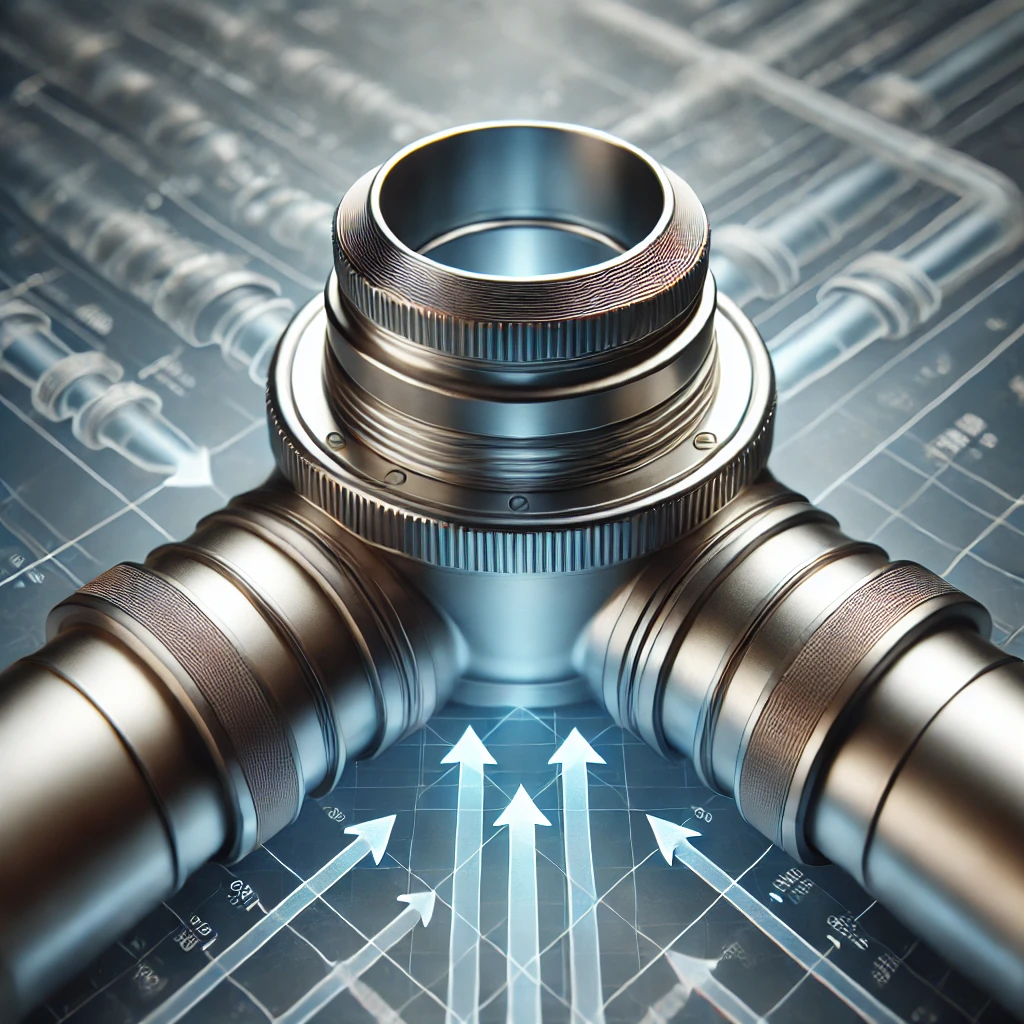Why Use a Reducer Fitting on a Plumbing System?
Discover why a reducer fitting is essential in plumbing systems. Learn about its types, uses, and benefits for maintaining efficient water flow and pressure. Explore why use a reducer fitting on a plumbing system for seamless transitions.
A reducer fitting is a vital component in plumbing systems, allowing seamless transitions between pipes of varying diameters. Its primary role is to ensure proper water flow, pressure management, and compatibility between different pipe sizes. Whether you’re a homeowner or a plumbing professional, understanding the importance of reducer fittings can lead to more efficient and reliable plumbing systems.
Reducer fittings are not only functional but also crucial for maintaining system integrity. By reducing pipe sizes strategically, they help manage pressure, minimize turbulence, and ensure that all system components work harmoniously. Let’s explore the significance, types, and applications of reducer fittings in detail.
What Are the Different Types of Pipe Reducers?
Pipe reducers come in two main types:
- Concentric Reducers
- Symmetrical design with aligned centerlines.
- Ideal for vertical pipelines to maintain smooth fluid flow and minimize turbulence.
- Eccentric Reducers
- Offset design with misaligned centerlines.
- Best for horizontal pipelines to prevent air pockets or liquid accumulation.
Additionally, reducers can vary by material, such as stainless steel, PVC, or carbon steel, catering to different plumbing requirements. Understanding these types helps in selecting the right reducer for specific applications, ensuring optimal system performance.
What Is the Purpose of a Reducer in Plumbing?

Reducers serve multiple purposes in plumbing systems:
- Connecting Pipes of Different Sizes: Reducers provide a secure and leak-free connection between pipes with varying diameters.
- Managing Water Flow: By adjusting pipe sizes, reducers help regulate water flow and pressure throughout the system.
- Enhancing System Efficiency: They optimize plumbing designs, ensuring efficient performance and reducing the risk of blockages.
These fittings are essential in both residential and industrial plumbing, where adaptability to different pipe sizes is often necessary. Without reducers, plumbing systems would face frequent disruptions due to pressure imbalances or flow inconsistencies.
How Do Concentric and Eccentric Reducers Differ From One Another?

Their application and design are where they differ most:
- Concentric Reducers:
- Align pipes at the center.
- Commonly used in vertical pipelines to ensure symmetrical flow.
- Eccentric Reducers:
- Feature an offset alignment.
- Preferred for horizontal pipelines to avoid air pockets or liquid pooling.
Choosing between these two depends on the pipeline’s orientation and the type of fluid being transported. For instance, eccentric reducers are better for pipelines carrying mixed fluids or gases to prevent unwanted accumulation.
Why Are Reducers Used in Plumbing Systems?
Reducers play a critical role in maintaining the integrity of plumbing systems:
- Preventing Pressure Drops: They ensure consistent water pressure by smoothly transitioning pipe sizes.
- Adapting to Fixtures: Reducers allow larger pipes to connect with smaller appliances, such as faucets or valves.
- Regulating Flow Dynamics: They manage flow rates, especially in systems with varying demands.
By serving as a bridge between pipes of different sizes, reducers make complex plumbing designs practical and efficient. They also enhance system safety by minimizing risks associated with pressure surges or flow disruptions.
Why Use Reducers for Control Valves?
Reducers enhance the functionality of control valves by:
- Achieving Precise Flow Control: They adapt pipe sizes to fit valve dimensions, ensuring efficient operation.
- Minimizing Pressure Loss: Properly sized reducers help maintain consistent pressure around valves.
Control valves often need precise flow conditions to function effectively. Using reducers ensures that these conditions are met without compromising the overall system’s efficiency.
Types of Reducers in Piping
Here’s a detailed look at the two main types:
- Concentric Reducer
- Provides an even, conical transition between pipes.
- Suitable for vertical systems and pump discharge lines.
- Eccentric Reducer
- Maintains one side horizontally aligned.
- Ideal for horizontal pipelines to prevent gas or liquid entrapment.
Both types serve unique purposes, making them indispensable in modern plumbing and piping systems. Their usage ensures the longevity and reliability of pipelines in diverse applications.
Eccentric Reducer Installation

Installing an eccentric reducer requires attention to orientation:
- Flat Side Up: Prevents air accumulation in liquid pipelines.
- Flat Side Down: Avoids liquid pooling in gas systems.
In addition to preventing possible problems like cavitation or pressure loss, proper installation guarantees the best possible system performance. An improper alignment may result in inefficiency or possibly pipeline damage.
Why Use a Concentric Reducer in Pump Suction?
Concentric reducers are often used in pump suction systems because:
- They maintain uniform flow into the pump, preventing turbulence.
- Their symmetrical design reduces the risk of cavitation, ensuring efficient pump operation.
These features make concentric reducers ideal for systems where uninterrupted and balanced flow is crucial, such as in industrial water supply networks.
Eccentric Reducer Uses
Eccentric reducers are essential for:
- Horizontal Pipelines: Preventing air or liquid pockets.
- Industrial Applications: Managing flow in systems carrying viscous fluids or slurries.
Their offset design ensures that pipelines remain free from blockages, even in demanding conditions. This is particularly valuable in industries like oil and gas, where flow consistency is critical.
Why Use a Reducer Fitting on a Plumbing System?
Using a reducer fitting in plumbing ensures:
- Adaptation between varying pipe sizes.
- Proper water pressure and flow rates.
- Long-term system efficiency and reliability.
This versatility makes reducers a key component in both new installations and retrofits, where adjustments to existing systems are often necessary.
Pipe Reducer Size Chart
Selecting the correct size is crucial for compatibility and efficiency. Pipe reducer size charts, typically based on standards like ASME, help determine the dimensions required for specific applications. These charts ensure that reducers meet the design and operational needs of the plumbing system.
Additional Considerations for Plumbing Efficiency
Reducers play a role in optimizing the entire plumbing system. By choosing the appropriate type and material, users can avoid costly issues such as pipe damage, leakage, or reduced system lifespan. Regular maintenance and inspection ensure that reducers continue to perform effectively over time.
Conclusion
Reducer fittings are indispensable in plumbing systems for ensuring smooth transitions between pipes of varying sizes. By understanding their types, purposes, and applications, you can optimize water flow, pressure, and overall system performance. Whether it’s a concentric or eccentric reducer, these fittings are key to building efficient and reliable plumbing networks. Embrace their versatility and enhance your plumbing solutions today.
Reducer fittings demonstrate their value across various industries, from residential setups to complex industrial systems. Their ability to adapt, regulate, and optimize fluid dynamics makes them an essential part of modern plumbing.
Take the time to select and maintain the right reducer fittings for your system’s unique needs, and enjoy long-term efficiency and reliability.






